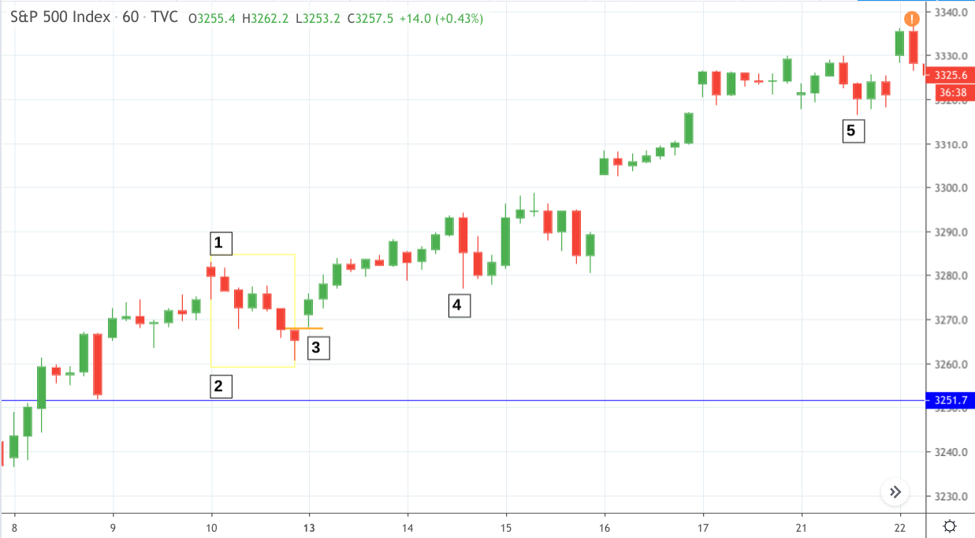Every first Friday of the month, there is an expectation of possible market volatility as the US Employment Situation report (more popularly referred to as the Jobs Report) gets released at 8:30 am ET. As a trader, even if you don’t understand the more complex implications of each figure contained in the report, you should at least know why it’s important, what to look out for, and how to trade it.
Understanding the Jobs Numbers
Published by the Bureau of Labor and Statistics (BLS), the jobs report paints a macro-picture of the nation’s job situation – minus the farming industry. That accounts for roughly 89% of the nation’s employment.
Analysts, economists, and investors use this figure to make forecasts on consumer confidence and spending among other market-related factors. In other words, if the country has a healthy jobs situation, then it’s likely that people will feel financially secure enough to spend more. More spending, according to popular economic assumption, means a stronger economy.
Trading the Jobs Numbers
Here’s 3 items to consider that may help you tactically position yourself for a trade:
- Compare consensus figures with actual figures.
- Check if the job numbers beat or miss consensus. Evaluate whether that “beat” or “miss” might significantly change the fundamental structure of the markets (in many cases, it doesn’t).
- Did market sentiment overreact? If market sentiment negatively overreacts during a bull market, then you might be able to play a short-term contrarian position, going long as the market pulls back (consider the reverse for a bear market).
S&P 500 Index (SPX) 1-hour chart – January 8 – 22, 2020

The yellow rectangle highlights Friday, January 10, 2020, the day that the December job numbers were reported. The job numbers reported a few big consensus misses and the markets sold off for the entire day.
Highlights:
- US non-farm payrolls increased 145,000 while economists were expecting 158,00 (a consensus miss).
So let’s go through the items mentioned above to try to determine a trading setup:
What was the consensus number? Economists were expecting a non-farm payrolls increase of 158,000
Did the report miss consensus?: Yes, it did. And note that a miss in December can be viewed as a big deal, as the holiday season often has the biggest bump in hiring, and that hiring typically drags into January (for post-holiday sales).
Did the report change the underlying structure of the economy? No, it didn’t. Despite the miss, the unemployment rate is still the lowest it had been since 1969. Plus, there was no “hard data” indicating a slow down in the domestic or global economy. Central banks across the globe have been accommodating with their interest rate cuts, as with the Federal Reserve.
Did market sentiment overreact? Likely, it did. Despite the job numbers miss, the unemployment rate was healthy and the overall fundamental picture looked rather optimistic.
Given this analysis, a trader could choose to go “long” when most market participants were selling.
Trading Tactics
When the market sold off in the morning of January 10 as shown at [1], you might have been watching the most recent swing low at [2]. When the S&P 500 stalled at a higher low at [3], you might have traded a breakout of that day’s high, placing a stop loss at either [2] or [3]. Price eventually broke upward, and you might have trailed your stop loss to the next swing level(s) at [4] and perhaps even [5] before the price eventually violated that low.
The Bottom Line
When trading any major economic report, you can generally break it down to consensus vs actual figures and short-term market sentiment vs longer-term fundamentals. If you’re a technical trader, this would entail that you have a basic understanding of the current economic situation and the factors that can influence it.
Overall, if you can develop strategies that adapt to economic data releases, then scheduled reports such as the job numbers can present themselves as trading opportunities rather than events to avoid.
Please be aware that the content of this blog is based upon the opinions and research of GFF Brokers and its staff and should not be treated as trade recommendations. There is a substantial risk of loss in trading futures, options and forex. Past performance is not necessarily indicative of future results.
Be advised that there are instances in which stop losses may not trigger. In cases where the market is illiquid–either no buyers or no sellers–or in cases of electronic disruptions, stop losses can fail. And although stop losses can be considered a risk management (loss management) strategy, their function can never be completely guaranteed.
Disclaimer Regarding Hypothetical Performance Results: HYPOTHETICAL PERFORMANCE RESULTS HAVE MANY INHERENT LIMITATIONS, SOME OF WHICH ARE DESCRIBED BELOW. NO REPRESENTATION IS BEING MADE THAT ANY ACCOUNT WILL OR IS LIKELY TO ACHIEVE PROFITS OR LOSSES SIMILAR TO THOSE SHOWN. IN FACT, THERE ARE FREQUENTLY SHARP DIFFERENCES BETWEEN HYPOTHETICAL PERFORMANCE RESULTS AND THE ACTUAL RESULTS SUBSEQUENTLY ACHIEVED BY ANY PARTICULAR TRADING PROGRAM.
ONE OF THE LIMITATIONS OF HYPOTHETICAL PERFORMANCE RESULTS IS THAT THEY ARE GENERALLY PREPARED WITH THE BENEFIT OF HINDSIGHT. IN ADDITION, HYPOTHETICAL TRADING DOES NOT INVOLVE FINANCIAL RISK, AND NO HYPOTHETICAL TRADING RECORD CAN COMPLETELY ACCOUNT FOR THE IMPACT OF FINANCIAL RISK IN ACTUAL TRADING. FOR EXAMPLE, THE ABILITY TO WITHSTAND LOSSES OR TO ADHERE TO A PARTICULAR TRADING PROGRAM IN SPITE OF TRADING LOSSES ARE MATERIAL POINTS WHICH CAN ALSO ADVERSELY AFFECT ACTUAL TRADING RESULTS. THERE ARE NUMEROUS OTHER FACTORS RELATED TO THE MARKETS IN GENERAL OR TO THE IMPLEMENTATION OF ANY SPECIFIC TRADING PROGRAM WHICH CANNOT BE FULLY ACCOUNTED FOR IN THE PREPARATION OF HYPOTHETICAL PERFORMANCE RESULTS AND ALL OF WHICH CAN ADVERSELY AFFECT ACTUAL TRADING RESULTS.